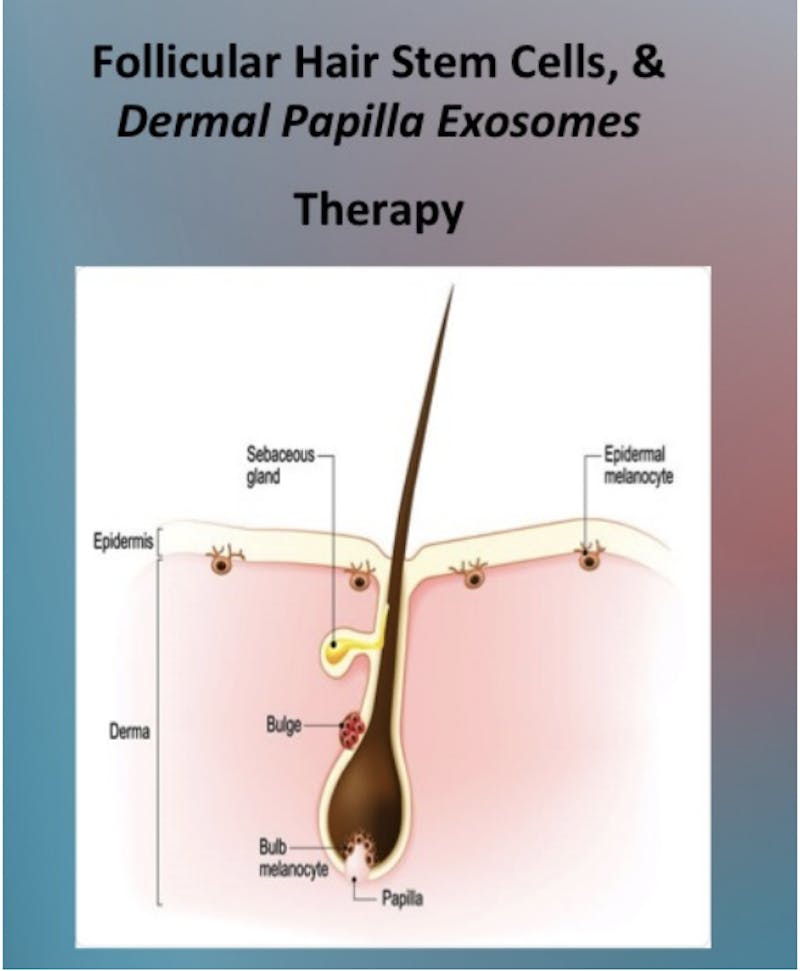
Dermal papilla exosomes are tiny packages of proteins, RNA, and other molecules released by the cells in the dermal papilla, a structure located at the base of hair follicles. These exosomes have been found to play a crucial role in promoting hair growth.
When the exosomes are released, they are taken up by the surrounding cells, including the cells in the hair follicle. Once inside these cells, the exosomes deliver their cargo of proteins and RNA. These molecules can stimulate the cells to divide and multiply, an essential hair growth process.
The proteins carried by the exosomes can also activate specific pathways in the cells that are involved in hair growth. For example, they can activate signaling pathways that promote the production of new hair cells and increase the blood supply to the hair follicle. Additionally, the RNA molecules in the exosomes can regulate the expression of certain genes that are important for hair growth.
In summary, dermal papilla exosomes contain proteins and RNA that can stimulate hair follicle cells to divide, promote the production of new hair cells, and increase blood supply to the hair follicle. This ultimately leads to increased hair growth.
Dermal papilla exosomes are believed to be more effective for hair regeneration compared to other exosomes for several reasons:
1. Cell-to-cell communication: Exosomes are small vesicles released by cells that contain various signaling molecules, including proteins, nucleic acids, and growth factors. Dermal papilla exosomes are specifically secreted by dermal papilla cells, which are known to play a crucial role in hair growth and regeneration. These exosomes carry specific signals that can directly communicate with other cells involved in hair follicle development and regeneration, enhancing their effectiveness.
2. Hair follicle-specific factors: Dermal papilla exosomes contain various factors specifically required for hair follicle development and growth. These factors include various growth factors (such as VEGF, FGF-7, and IGF-1), extracellular matrix proteins, and microRNAs. These components can provide the necessary signals and stimulate the proliferation and differentiation of hair follicle stem cells, leading to hair regeneration.
3. Localization and proximity: Dermal papilla cells are located at the base of the hair follicle, in close proximity to the hair follicle stem cells. This proximity allows the exosomes released by dermal papilla cells to directly target and influence the adjacent stem cells, facilitating hair regeneration. Other exosomes from distant sources may not have the same direct access to the hair follicle stem cells, limiting their effectiveness.
4. Natural hair growth regulation: Dermal papilla cells naturally regulate hair growth cycles by transitioning hair follicles between growth (anagen), rest (telogen), and shedding (catagen) phases. The exosomes secreted by dermal papilla cells carry signals that can modulate this hair growth regulation system, promoting hair regeneration.
However, it is important to note that the field of exosome-based hair regeneration is still relatively new, and further research is needed to fully understand the mechanisms and potential of dermal papilla exosomes for hair regrowth.
